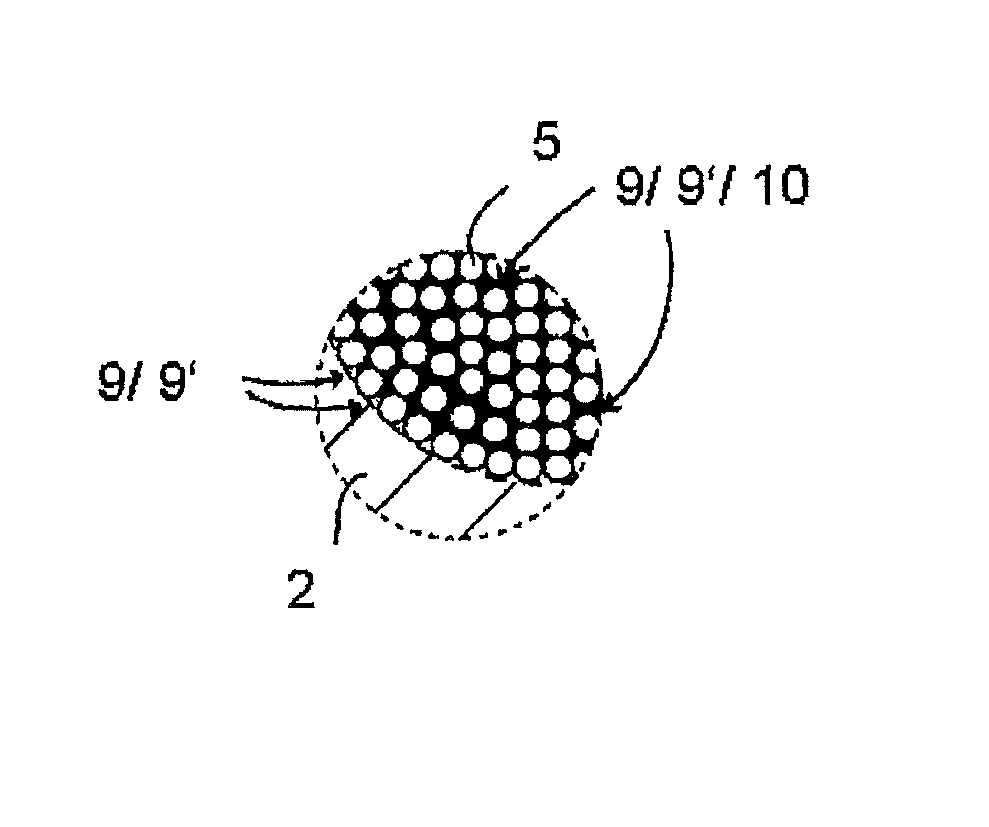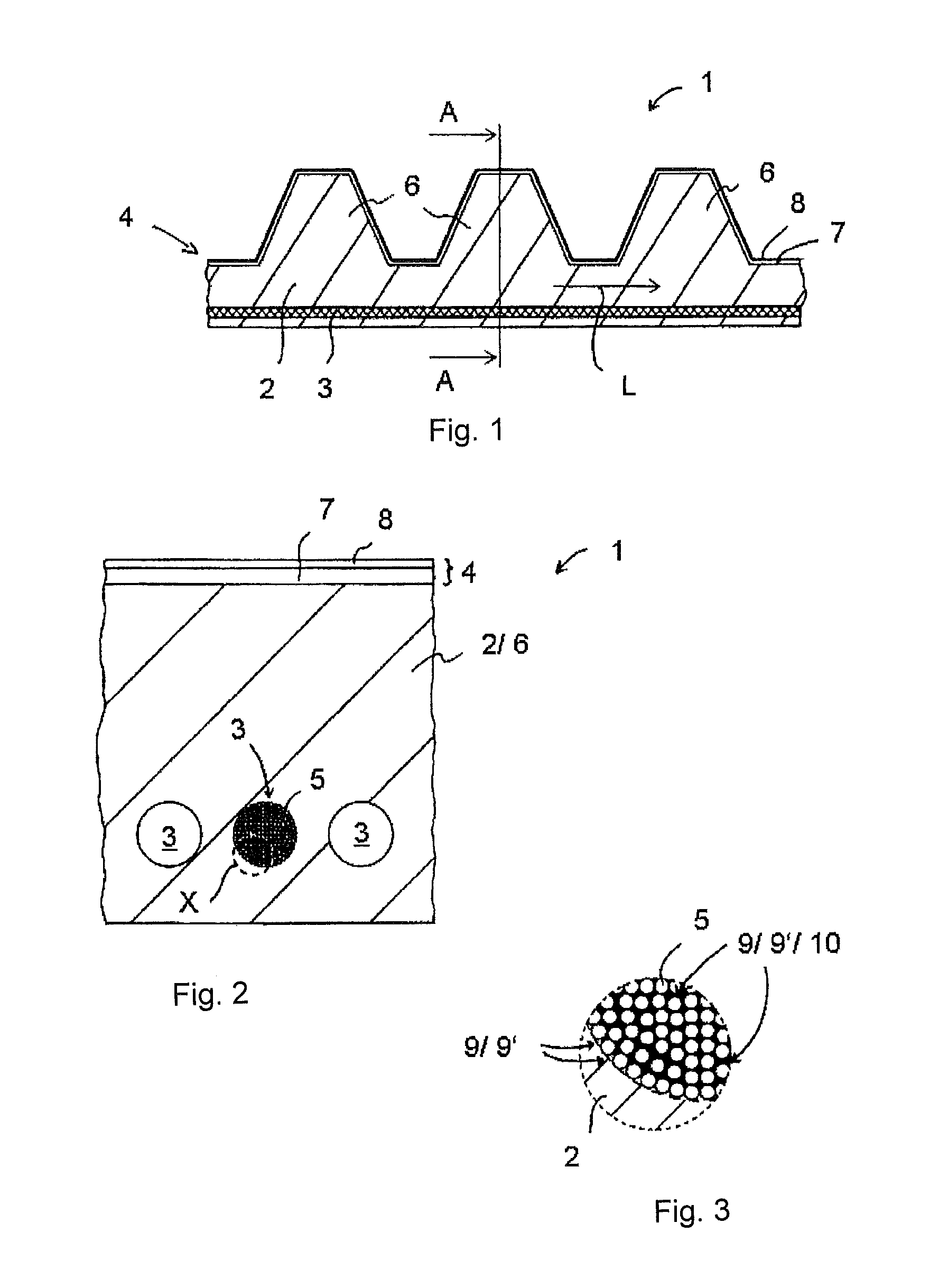Drive belt for transmitting a drive movement, and method for producing a drive belt
a technology of drive movement and drive belt, which is applied in the direction of driving belt, v-belt, rope/pulley cable, etc., can solve the problems of reduced flexibility failure of the drive belt, and increased bending modulus, so as to increase the mechanical abrasion resistance of the drive belt 1, and reduce the wear ra
- Summary
- Abstract
- Description
- Claims
- Application Information
AI Technical Summary
Benefits of technology
Problems solved by technology
Method used
Image
Examples
Embodiment Construction
[0033]A plurality of carbon fibers 5 are twisted into a yarn to make a carbon cord 3. Said carbon fibers are immersed into a dipping bath for applying and / or introducing the rupture risk reducing filler 10. The rupture risk reducing filler 10 adheres to the carbon fibers 5 and / or fills up the first portion 9′ of the cavities while being immersed. The process steps of twisting and immersing the carbon fibers 5 may be performed in any desired order. To meet the requirements of a specific application it is possible also to twist two or more yarns into a yarn bundle. Such twisting of two or more yarns into a yarn bundle in turn may be effected before or after immersing the carbon fibers 5 into the dipping bath.
[0034]Another process step in forming the belt body 2 is to wrap a carbon cord 3 containing the rupture risk reducing filler 10 with curable flexible material and to make part of said material penetrate into the second portion 9″ of those cavities 9 which are not containing any ru...
PUM
 Login to View More
Login to View More Abstract
Description
Claims
Application Information
 Login to View More
Login to View More - R&D
- Intellectual Property
- Life Sciences
- Materials
- Tech Scout
- Unparalleled Data Quality
- Higher Quality Content
- 60% Fewer Hallucinations
Browse by: Latest US Patents, China's latest patents, Technical Efficacy Thesaurus, Application Domain, Technology Topic, Popular Technical Reports.
© 2025 PatSnap. All rights reserved.Legal|Privacy policy|Modern Slavery Act Transparency Statement|Sitemap|About US| Contact US: help@patsnap.com


